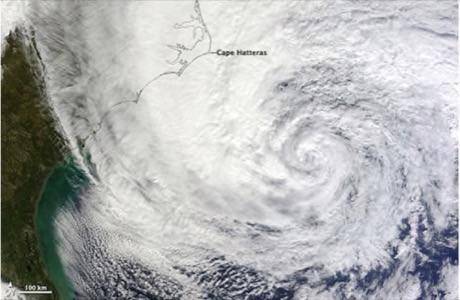
These days, we rely on our gadgets for everything. Perhaps too much. That is why when we see a mammoth storm bearing down, such as Hurricane Sandy is this week, we think of the basics. Non-perishable food. Lots and lots of water. Batteries. But, our smartphones and tablets can also help us prepare for the brunt of the storm and make sure we stay connected to family, friends and vital information.
Major Problem: Batteries
We live in a world where all of our gadgets run on batteries with a fairly short daily lifespan. An iPhone can remain on “standby” mode for 225 hours, but that is only if you are not really using it. If you are talking on your smartphone or using apps, most only have a daily battery life of eight to 10 hours. If an extended power outage is a significant reality, here are a couple precautions to take:
- Charge your smartphones and tablets to their maximum before you lose power.
- Invest in extra cellphone batteries with rechargeable units.
- If you have an iPhone and cannot replace your battery, invest into a third-party battery pack, like the Morphie Juice Pack.
- Buy a smartphone charger for your car. If your house loses power for an extended time, you can still draw power from your car battery.
Staying Dry
Water is the enemy of your gadgets. There is little you can do if you face major flooding but you can keep your gadgets dry. Investing in watertight pouches that you can throw your laptop/smartphone/tablet could prove very valuable. Such pouches are available at most camping supply stores. In lieu of watertight pouches, sealable plastic baggies can offer a modicum of protection in a pinch.
For your home, it is important to try and keep all of your wires out of water. Move your power supplies, Wi-Fi routers and other electrical supplies off the floor and onto shelves. Insulation foam can cover other wires and wonders can be worked with a mixture of duct tape, staples and nails. On the other hand, if you have water in your house, you are likely facing more significant problems than keeping your gadgets dry.
Staying Connected
If you lose power, there is a good chance you are going to lose your wireline communications capabilities too. That means your home Wi-Fi router is going to be useless, sometimes even if you have an uninterrupted power supply (UPS) device backing up your home computer. The good news is that wireless communication infrastructure is more flexible and less prone to going down during major disasters (flood, fire and wind damage are threats to wireless towers, so they are certainly not infallible).
The major U.S. cellular carriers are preparing for Sandy by deploying teams towards the projected path of the storm, stocking up on rechargeable batteries and car chargers and working with state and local emergency workers to make sure vital communication remains intact.
The wireless carriers encourage people to use text messaging if the voice networks experience congestion or go down entirely. Investing in a femtocell in your house or office might not be a bad idea either to boost your connection in case your local tower experiences problems.
Of course, there are other ways to stay connected if you find your smartphone completely useless, either through loss of cellular connection or battery power. After all, people did survive these types of storms for years before the advent of smartphones. Shortwave communications, like walkee-talkees are always a good idea to have around the house. As are battery powered radios.
If you have a UPS device and it keeps your system up and running with Wi-Fi intact, consider opening up that Wi-Fi connection to your neighbors that do not have a connection. Neighbors banding together to share resources is a great way to get through any natural disaster and make sure that people can connect to vital information as well as family and friends.
Apps For Preparedness & Information
There are a variety of apps that help you prepare. A couple good ones:
- FEMA – The Federal Emergency Management Agency has an app for iOS, Android and BlackBerry. The app has maps with FEMA Disaster Recovery locations and shelters, checklists for planning and other vital information.
- Wunderground – The Weather Underground is an interactive weather map for iOS and Android. Provides real-time updates from hyper-local destinations to get you the information you need for your neighborhood.
- TuneIn – TuneIn has the ability to turn your smartphone into a radio to listen to your local stations. If you lose power but still have a cellular data connection, you can still keep up with your local news and information.
Top image courtesy of NASA

















